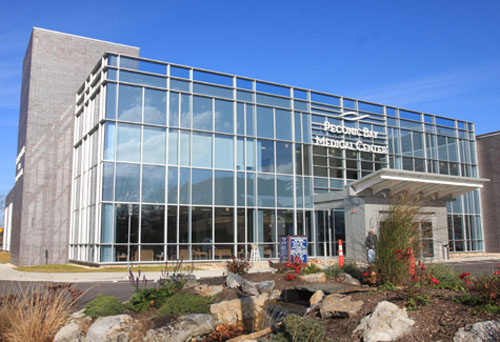Changes in health care market affecting ‘all of Long Island’

North Fork hospitals are seeing a transformation in the local health care market — with demand shifting from inpatient services, provided in a hospital setting, to outpatient services, provided at clinics and doctor’s offices.
The transformation is by design, hospital officials say, thanks in part to the Affordable Care Act, and area hospitals are being forced to react. As a result, Peconic Bay Medical Center in Riverhead has announced a trimming of staff.
Hospital officials at both Peconic Bay and Eastern Long Island Hospital in Greenport reported a drop in patient admissions for January and February 2014.
The changes are not just affecting Peconic Bay — “it’s all of Long Island,” said Andrew Mitchell, PBMC Health’s president and CEO. “It’s across the whole country.”
Unconfirmed figures reported in a PBMC Health press release indicate that during the first two months of this year, hospitals across Long Island saw admissions decline by 3,600 over the same period in 2013.
Last week, officials with the Riverhead hospital announced they had eliminated 12 administrative positions and that it will not hire new employees to fill 40 already vacant positions in administrative and patient care sectors.
Paul Connor, president and CEO of ELIH, said the Greenport hospital is also looking at various opportunities to reduce operating costs.
“The hospital has not chosen to have any type of layoff or reduction in force,” Mr. Connor said. “That doesn’t mean that down the road it couldn’t happen.”
And while admissions numbers are down at both North Fork hospitals, their CEOs report sizable increases in the number of people seeking outpatient services — such as care provided by PBMC Health at its new Manorville campus and by Eastern Long Island Hospital at its Cutchogue walk-in clinic.
“Our Manorville campus, specifically the urgent care center, is seeing huge increases in volume,” Mr. Mitchell said.
The center, which opened in September, is already experience 80 percent more volume than originally anticipated, Mr. Mitchell said, adding that hours have been extended and additional staff has been hired to keep up with the demand.
“This is exactly what the Affordable Care Act was designed to do,” Mr. Mitchell said. “It was designed to shift care to more of an ambulatory environment.”
Officials at the Riverhead hospital said they are “seriously looking at potentially opening up another urgent care center on Route 58 in Riverhead” to meet rising local demand.
But the transformation is raising concerns among health care professionals.
Mr. Mitchell and Mr. Connor both said many patients have switched from commercial insurance plans that come with affordable co-pays, provided through an employer, to insurance packages obtained through the federal health insurance exchange, which is accessed in New York through nystateofhealth.ny.gov.
The more affordable coverage options on the exchange include sizable deductibles, anywhere from $3,000 and up, which could be keeping patients from seeking proper care.
“Do people defer care?” Mr. Mitchell asked. “And in doing so, do we miss that opportunity to treat them earlier because [another treatment] is simpler and at lower cost?”
He believes the situation runs contrary to the legislation’s intent to focus on “prevention and wellness.”
Mr. Connor said the health care industry is fearful that unpaid deductible costs are going to turn into additional bad debt for hospitals. “So we’re watching this very carefully,” he said.
In addition to an uptick in business at its Cutchogue clinic, Eastern Long Island Hospital is also seeing more demand for outpatient physical therapy and mental health and addiction services, Mr. Connor said, noting that recent changes to Medicare include a focus on behavioral health, which could be fueling the demand.
“We’ve been having some record days at our Quannacut Addiction Services center in Riverhead,” he said.
Medicare coverage for mental health services is now in line with coverage for other types of medical care — up to 80 percent of bills.
Before the change in 2013, Medicare patients were responsible for half of their mental health care bills.
The North Fork hospital CEOs both said they are trying to flex with the market to stay out in front of the anticipated changes.
Investments are being made in part to allow the hospitals to offset losses resulting from reduced inpatient volume. “We predicted these trends,” Mr. Mitchell said.








